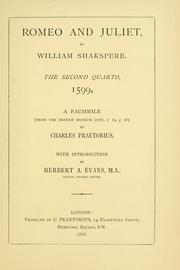Menu

Romeo and Juliet
by William Shakespeare
SAMPSON. Gregory, on my word, we’ll not carry coals. GREGORY. No, for then we should be colliers. SAMPSON. I mean, if we be in choler, we’ll draw. GREGORY. Ay, while you live, draw your neck out o’ the collar. SAMPSON. I strike quickly, being moved. GREGORY. But thou art not quickly moved to strike. SAMPSON. A dog of the house of Montague moves me. GREGORY. To move is to stir; and to be valiant is to stand: therefore, if thou art moved, thou runn’st away. SAMPSON. A dog of that house shall move me to stand. I will take the wall of any man or maid of Montague’s. GREGORY. That shows thee a weak slave, for the weakest goes to the wall. SAMPSON. True, and therefore women, being the weaker vessels, are ever thrust to the wall: therefore I will push Montague’s men from the wall, and thrust his maids to the wall. GREGORY. The quarrel is between our masters and us their men. SAMPSON. ’Tis all one, I will show myself a tyrant: when I have fought with the men I will be civil with the maids, I will cut off their heads. GREGORY. The heads of the maids? SAMPSON. Ay, the heads of the maids, or their maidenheads; take it in what sense thou wilt. GREGORY. They must take it in sense that feel it. SAMPSON. Me they shall feel while I am able to stand: and ’tis known I am a pretty piece of flesh. GREGORY. ’Tis well thou art not fish; if thou hadst, thou hadst been poor John. Draw thy tool; here comes of the house of Montagues.
The Tragedy of Romeo and Juliet, often shortened to Romeo and Juliet, is a tragedy written by William Shakespeare early in his career about the romance between two Italian youths from feuding families. It was among Shakespeare's most popular plays during his lifetime and, along with Hamlet, is one of his most frequently performed. Today, the title characters are regarded as archetypal young lovers. Romeo and Juliet belongs to a tradition of tragic romances stretching back to antiquity. The plot is based on an Italian tale written by Matteo Bandello and translated into verse as The Tragical History of Romeus and Juliet by Arthur Brooke in 1562 and retold in prose in Palace of Pleasure by William Painter in 1567. Shakespeare borrowed heavily from both but expanded the plot by developing a number of supporting characters, in particular Mercutio and Paris. Believed to have been written between 1591 and 1595, the play was first published in a quarto version in 1597. The text of the first quarto version was of poor quality, however, and later editions corrected the text to conform more closely with Shakespeare's original. Shakespeare's use of poetic dramatic structure (including effects such as switching between comedy and tragedy to heighten tension, the expansion of minor characters, and numerous sub-plots to embellish the story) has been praised as an early sign of his dramatic skill. The play ascribes different poetic forms to different characters, sometimes changing the form as the character develops. Romeo, for example, grows more adept at the sonnet over the course of the play. Romeo and Juliet has been adapted numerous times for stage, film, musical, and opera venues. During the English Restoration, it was revived and heavily revised by William Davenant. David Garrick's 18th-century version also modified several scenes, removing material then considered indecent, and Georg Benda's Romeo und Julie omitted much of the action and used a happy ending. Performances in the 19th century, including Charlotte Cushman's, restored the original text and focused on greater realism. John Gielgud's 1935 version kept very close to Shakespeare's text and used Elizabethan costumes and staging to enhance the drama. In the 20th and into the 21st century, the play has been adapted to film in versions as diverse as George Cukor's Romeo and Juliet (1936), Franco Zeffirelli's Romeo and Juliet (1968), Baz Luhrmann's Romeo + Juliet (1996), and Carlo Carlei's Romeo and Juliet (2013).